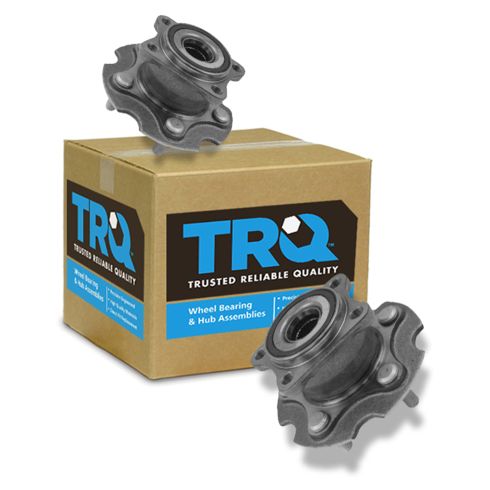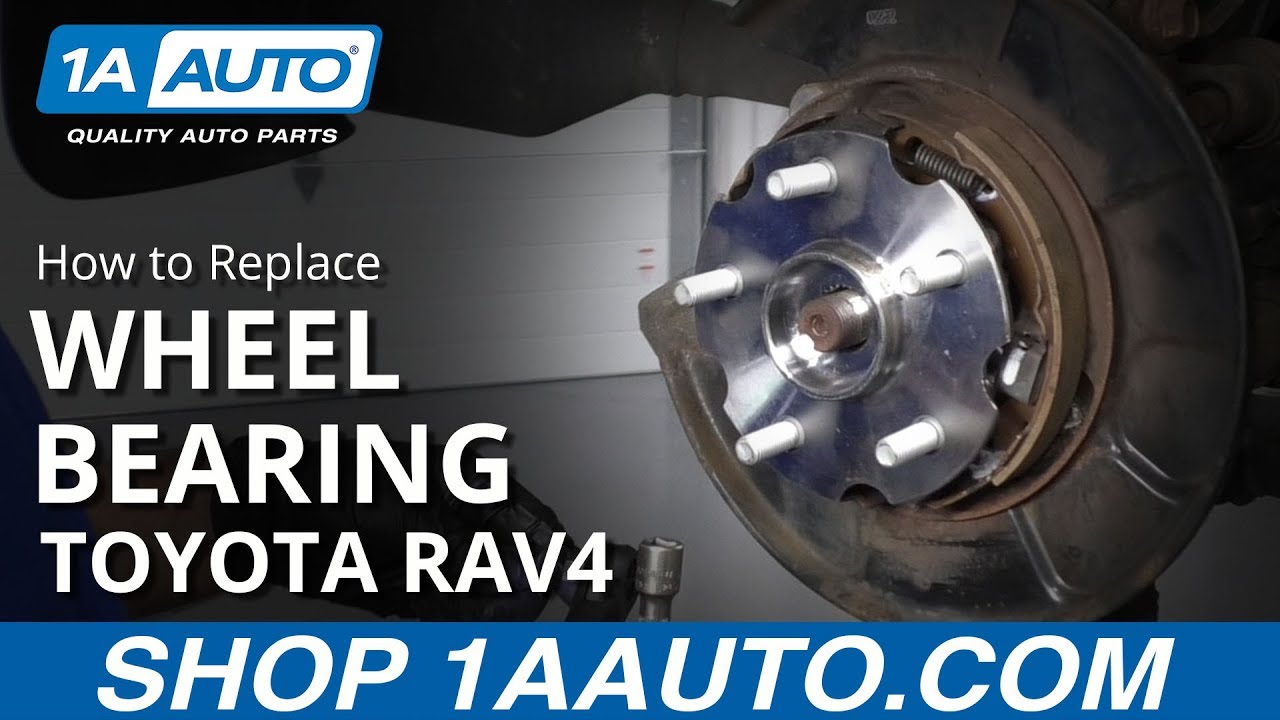1ASHS00903-Toyota Lexus Rear Driver & Passenger Side 2 Piece Wheel Bearing & Hub Assembly Set TRQ BHA53771



Replaces
Toyota Lexus Rear Driver & Passenger Side 2 Piece Wheel Bearing & Hub Assembly Set TRQ BHA53771


Product Reviews
Loading reviews
4.58/ 5.0
19
19 reviews
Great product
February 27, 2017
The RAV4 wheel bearing hub assymbly seems to be tight and fit perfectly. Thanks
Ball bearing hub
August 28, 2017
Received it on time and happy with the prompt service
2006 Toyota RAV4 2.4L 4wd
November 21, 2017
Fit the vehicle perfectly and took care of the bad wheel bearing I had. All is good, price was right, and not bad to install.
Wheel bearings
October 9, 2019
the Wheel bearings fit really well I was skeptical before I. Bought in other company online but 1A auto is really good on prices and quality
Works Great! Drives nice and smooth!
January 17, 2020
Overall satisfied with the part, seems to be high quality and well packaged. Online (youtube) instructions were easy to follow.
One note though, when ordering pay close attention to engine size and drive train, it definitely makes a difference which one you get because of wheel speed sensor (2WD) or splined (AWD).
Outstanding customer service AND prices?!?
October 4, 2020
Outstanding customer service AND prices can not be beat. I did the usual online price comparison, and 1A had them ALL beat. Shipping was quick, and once my order arrived, there was a minor issue that was quickly resolved with a phone call. No hassle, no hustle, no questions. You dont get that type of service these days. Now that Ive found 1A auto, I am a dedicated customer.
Rav 4
October 5, 2020
Perfect fit great price!!
Perfect fit, Fast shipping
November 17, 2020
I love these guys. Good Parts at a great price. Crazy fast shipping, perfect fit. Videos are a great added plus. Makes the job easy.
Couldn't ask for more
May 5, 2021
I got these wheel bearings to replace the worn out, noisy ones on my Rav4. They were a perfect fit, quality product. Now my Rav4 is nice and quiet. I especially love that 1A had a video on how to do the job so there was no guess work involved. For sure I'll be back next time I need a part!
2011 Toyota Rav 4
December 26, 2021
Vary easy to install, helpful video, parts matched exactly like the originals, great prices, fast shipping, best thing, no more noise and the problem fixed, I will definitely be buying from them again.
Sincerely,
Gary Higgins
January 17, 2022
Quited down my wife's Rav4 immensely with these new bearings
Quality part
May 26, 2022
Quick delivery, perfect fit, no more squeaking
1aauto made it look easy and it was!
June 26, 2022
The bearings were a perfect match. The lifetime guarantee, the exceptional easy-to-follow instructional video, the comprehensive list of tools required, and the critical torque specifications provided convinced me to give it a DIY go. I purchased the few specialty tools I didn't already have, however, I could have easily borrowed them free of charge from the local auto parts store. Following the 1aauto video I had no surprises. Kudos to your videographer. And even with the additional purchases I still saved over $1,200 based on the dealer quote!
December 26, 2022
they are making noise. went to auto zone to get a name brand. will not buy on line again.
December 28, 2022
one of the bearings broke after install
fit rav4 2012
April 18, 2023
fit perfectly on Rav4 Limited 3.5L 4wd 2012
July 8, 2023
Form, fit and function is great.
July 22, 2023
Good
Replaced all four bearings in my RAV4
December 8, 2023
Big test is coming up doing 1600 mile road with my son r before replaced all four I'll let you guys know so far they're doing good all four real quiet
Customer Q&A
Do these fit a 3.5 v6 rav4?
September 26, 2018
10
These rear hubs will fit any 4WD Rav4 from 2006-2016.
September 26, 2018
T I
?This will fit my 2006 Toyota rav 4 sport 4 wheel drive?
September 15, 2019
10
Thank you for the inquiry. Yes, according to the information you provided, this part will fit your vehicle. Please let us know if you have any other questions!
September 16, 2019
Christa R
is this compatible with abs equipped rav 4?
October 19, 2020
10
Yes. Remove the speed sensor before you put the bearing or you may break it.
October 19, 2020
T I
10
Thank you for your inquiry, Gerry! Yes these will be compatible for models with ABS.
October 19, 2020
T I
Where are these hub made ?
August 8, 2021
10
These are manufactured by TRQ. TRQ is a high quality, high-end name brand that we offer and back with our 1A Auto Limited Lifetime Warranty. The parts are made in multiple overseas locations.
August 12, 2021
Andra M
Does this assembly come with abs sensor?
April 18, 2022
10
The ABS ring is included.
April 19, 2022
Andra M
Is fornt or rear
Or Doesn't matter?
January 12, 2023
10
I don't know if front/rear interchangeable but we needed a rear hub for 2010 Rav4
January 12, 2023
Vyacheslav A
10
We needed a rear hub for 2010 Rav4 and installed it successfully. If you read description for the page, it shows:
"Kit Includes:
(1) Rear Passenger Side Wheel Bearing & Hub Assembly
(1) Rear Driver Side Wheel Bearing & Hub Assembly"
January 12, 2023
Vyacheslav A
10
These are for the rear. They will fit your vehicle if it has AWD.
January 12, 2023
Andra M








